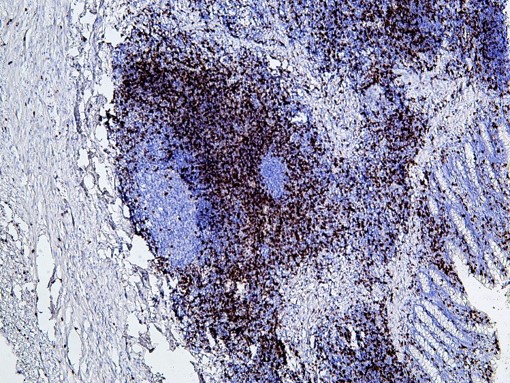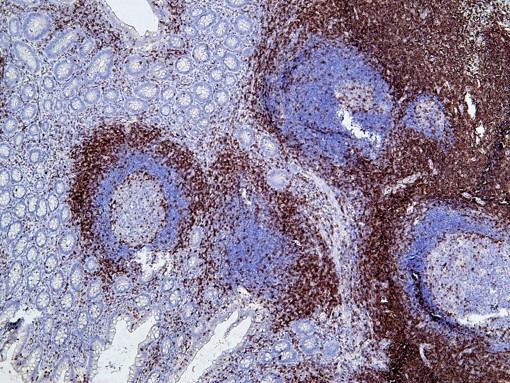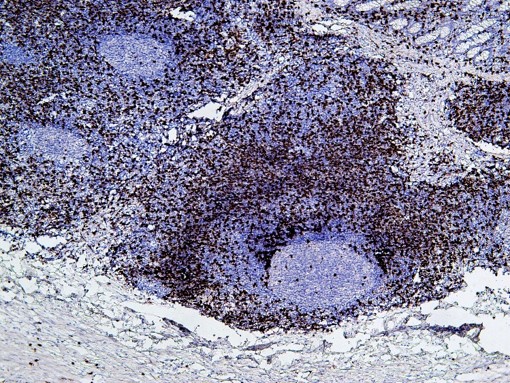Stathmin (ABT266) IHC kit
- Catalog No.:IHCM6910
- Applications:IHC
- Reactivity:Human; Mouse (predicted: Rat)
- Target:
- Stathmin 1
- Fields:
- >>MAPK signaling pathway;>>MicroRNAs in cancer
- Gene Name:
- STMN1 C1orf215 LAP18 OP18
- Protein Name:
- Stathmin
- Human Gene Id:
- 3925
- Human Swiss Prot No:
- P16949
- Immunogen:
- Synthesized peptide derived from human Stathmin AA range: 1-100
- Specificity:
- The antibody can specifically recognize human Stathmin protein. In western blotting of HepG2 cell lysate, the antibody can label a 17KDa band corresponding to Stathmin.
- Source:
- Mouse, Monoclonal/IgG2a, Kappa
- Purification:
- The antibody was affinity-purified from mouse ascites by affinity-chromatography using specific immunogen.
- Storage Stability:
- 2°C to 8°C/1 year
- Other Name:
- Stathmin (Leukemia-associated phosphoprotein p18;Metablastin;Oncoprotein 18;Op18;Phosphoprotein p19;pp19;Prosolin;Protein Pr22;pp17)
- Background:
- This gene belongs to the stathmin family of genes. It encodes a ubiquitous cytosolic phosphoprotein proposed to function as an intracellular relay integrating regulatory signals of the cellular environment. The encoded protein is involved in the regulation of the microtubule filament system by destabilizing microtubules. It prevents assembly and promotes disassembly of microtubules. Multiple transcript variants encoding different isoforms have been found for this gene. [provided by RefSeq, Feb 2009],
- Function:
- disease:Present in much greater abundance in cells from patients with acute leukemia of different subtypes than in normal peripheral blood lymphocytes, non-leukemic proliferating lymphoid cells, bone marrow cells, or cells from patients with chronic lymphoid or myeloid leukemia.,function:Involved in the regulation of the microtubule (MT) filament system by destabilizing microtubules. Prevents assembly and promotes disassembly of microtubules. Phosphorylation at Ser-16 may be required for axon formation during neurogenesis. Involved in the control of the learned and innate fear.,PTM:Many different phosphorylated forms are observed depending on specific combinations among the sites which can be phosphorylated. MAPK is responsible for the phosphorylation of stathmin in response to NGF. Phosphorylation at Ser-16 seems to be required for neuron polarization (By similarity). Phosphorylation at
- Subcellular Location:
- Cytoplasmic
- Expression:
- Ubiquitous. Expression is strongest in fetal and adult brain, spinal cord, and cerebellum, followed by thymus, bone marrow, testis, and fetal liver. Expression is intermediate in colon, ovary, placenta, uterus, and trachea, and is readily detected at substantially lower levels in all other tissues examined. Lowest expression is found in adult liver. Present in much greater abundance in cells from patients with acute leukemia of different subtypes than in normal peripheral blood lymphocytes, non-leukemic proliferating lymphoid cells, bone marrow cells, or cells from patients with chronic lymphoid or myeloid leukemia.
- June 19-2018
- WESTERN IMMUNOBLOTTING PROTOCOL
- June 19-2018
- IMMUNOHISTOCHEMISTRY-PARAFFIN PROTOCOL
- June 19-2018
- IMMUNOFLUORESCENCE PROTOCOL
- September 08-2020
- FLOW-CYTOMEYRT-PROTOCOL
- May 20-2022
- Cell-Based ELISA│解您多样本WB检测之困扰
- July 13-2018
- CELL-BASED-ELISA-PROTOCOL-FOR-ACETYL-PROTEIN
- July 13-2018
- CELL-BASED-ELISA-PROTOCOL-FOR-PHOSPHO-PROTEIN
- July 13-2018
- Antibody-FAQs
- Products Images
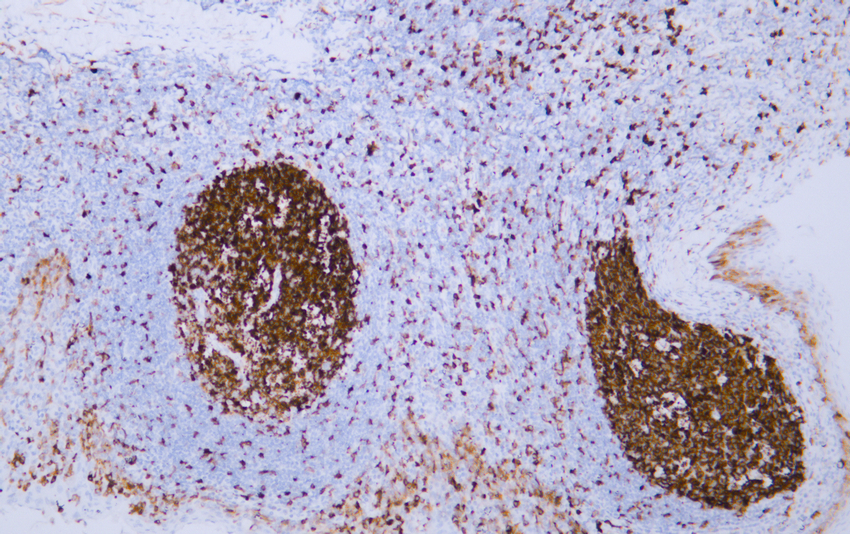
- Human tonsil tissue was stained with Anti-Stathmin (ABT266) Antibody
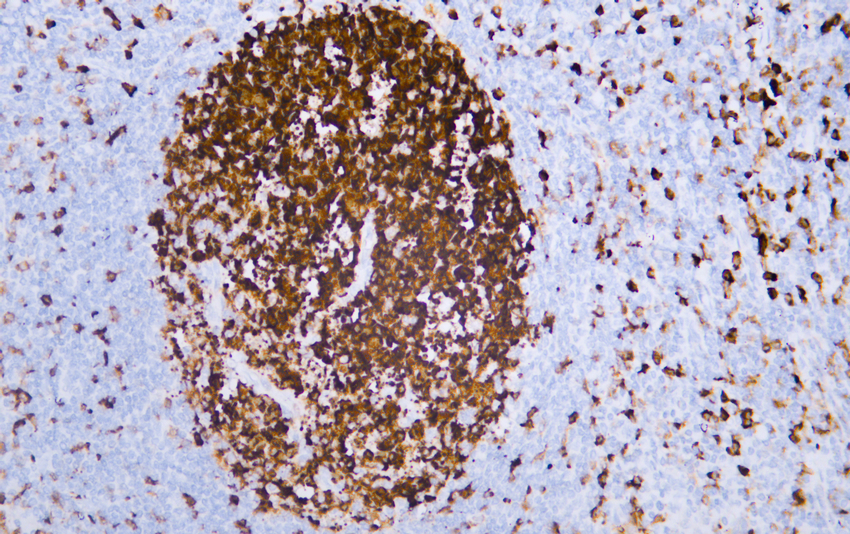
- Human tonsil tissue was stained with Anti-Stathmin (ABT266) Antibody
